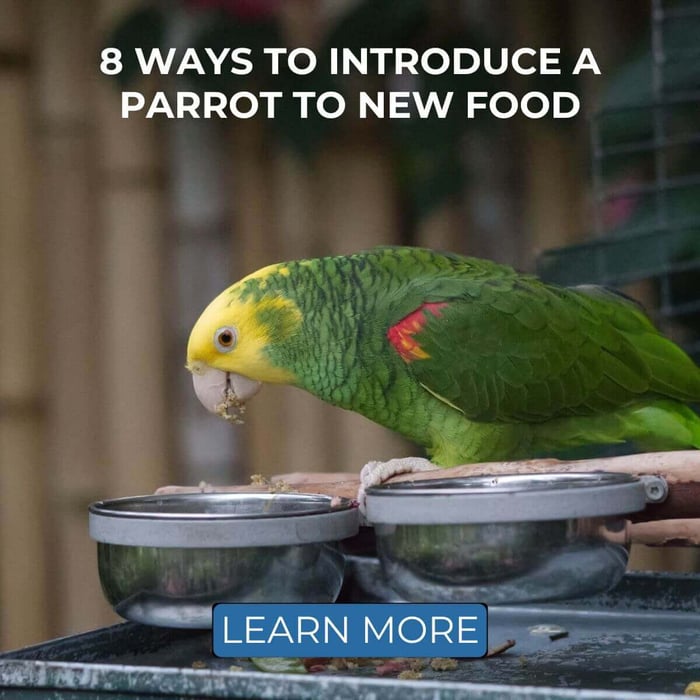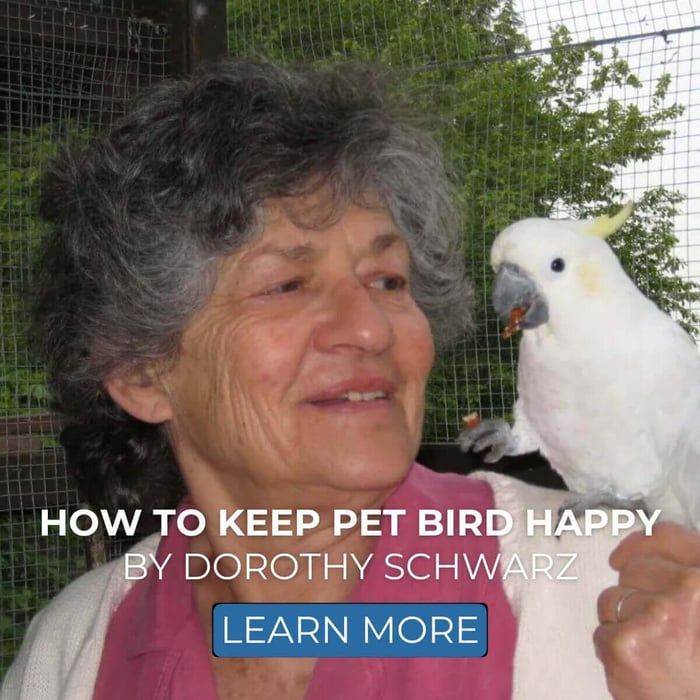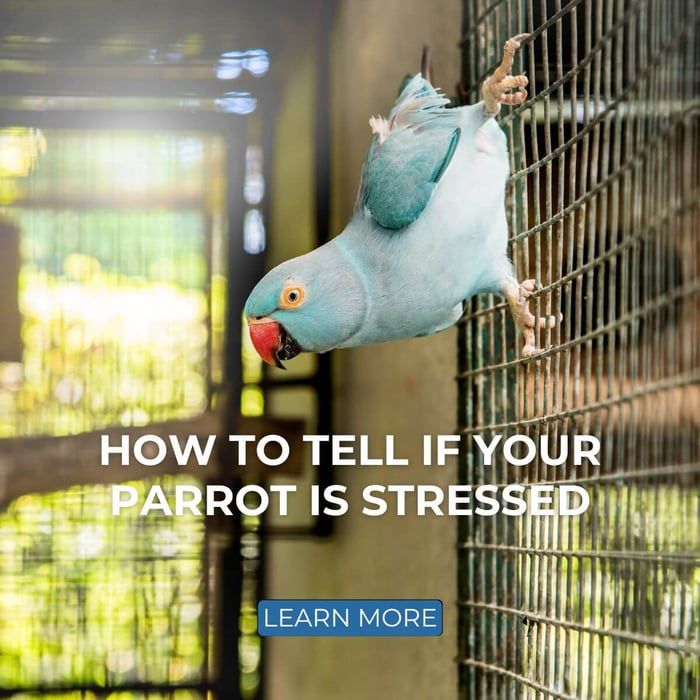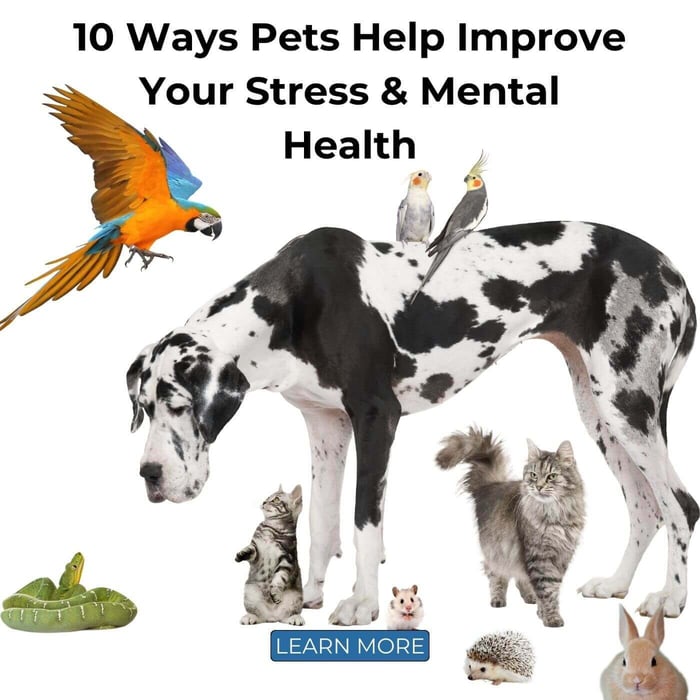Understanding Basic Parrot Behaviour by Parrot Essentials
Parrots try to communicate with humans through body language, actions and vocalizations. Here are some basic parrot behaviours to give you the ability to understand what parrots are trying to communicate to humans. Knowing what the parrot behaviour means will give you a better understanding of how to have a successful communicative relationship with your feathered companion.
Parrot Behaviour List:

Beaking
Baby parrots go through a nibbling stage. They are checking out their environment. Everything has different textures. In this nibbling stage, do not let your bird use your fingers or other parts of your body. Give your bird something more appropriate, like a toy or other acceptable object.
Beak grinding
A sign that your bird is relaxed, very secure and content with its environment. Your bird is just about to go to sleep.
Beak wiping
To clean debris off its beak after eating. It will also keep the beak in condition.
Biting or nipping
Your bird uses this as a last resort for communication with you as you have not responded to previous communication attempts. There is always a reason. It could be anger or frustration (displaced aggression), cornered, displaying, dominance, excessive petting or fondling from the owner, hunger, jealousy, scared, startled, threatened or tired. If an intruder is nearby, your bird may bite you to get you to flee. Sometimes, during the mating season, parrots may bite. When your parrot is in this mood, it is best to leave it alone at the time until your bird is out of this mood.
Bottom of the cage hiding under paper
Your bird may be sleeping there. It could be nesting parrot behaviour. It may be frightening. It could indicate that your bird is ill, especially if it is lethargic and feathers are puffed up. In this case, an avian veterinarian should be seen pronto.
Bouncing up and down
Your bird is very happy. Your bird is trying to get your attention and wants to come out of its cage.
Chattering loudly
Chattering loudly can happen when your home is noisier than normal. If the loud noises quieted down, so will your bird.
Chewing
Most parrots just love to chew! It is a stimulating activity for your bird. Chewing helps keep your bird's beak in excellent condition and helps to burn off excess energy.
We offer a great selection of chewable parrot toys.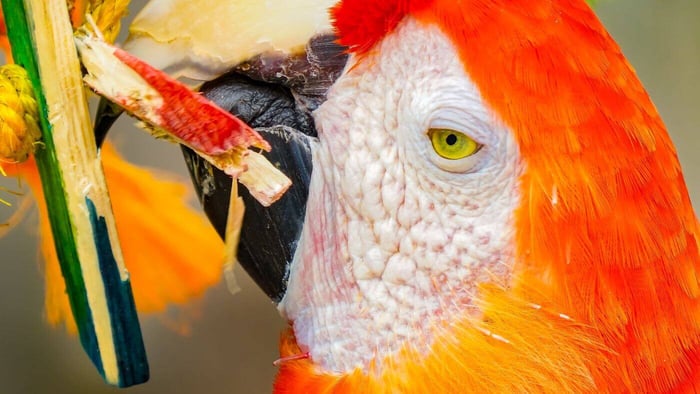
Crouching low and holding fluttering wings slightly away from the body
Your bird is begging you to pet it.
Displaying
A sign of aggression. A strutting parrot exhibiting a fanned tail, strutting, ruffled nape and back feathers with head feathers held tight against the head with pupil dilation and crouching very low and the beak open. Sometimes, vocal sounds accompany this parrot behaviour. Some birds will also wipe the beak on a perch. When your bird is exhibiting this type of parrot behaviour, it is recommended not to pick up your bird, as this is a good way to get bitten. Your bird does this to attract a potential mate, which may be you, or to frighten off an intruder or rival.
Drooping wings
After a bath or misting, your bird will do this to dry off. Your bird may be hot, but this would be a way to cool itself. Also, it can mean that your bird is not feeling well.
Eyes pinning or flashing
Pinning – eyes dilate, contract, and the process keeps repeating. Your bird may pin its eyes when it is aggressive, excited, frightened, pleased, sexually excited or upset. Watch out! If you pick up your bird, your bird will bite. Leave the bird alone. Wait until your bird is out of this mood before picking your bird up.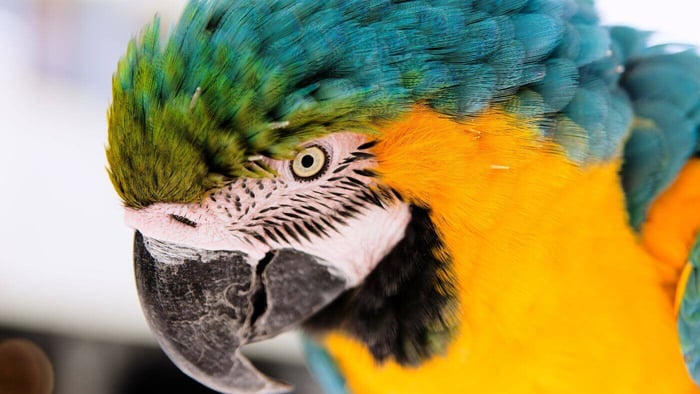
Fluffing
It is often done after a good preening session. This releases the shed keratin (bird dust) into the air and realigns the feathers to their proper place.
Growling
This may be a warning signal that your bird is upset. Leave your bird alone for the moment and approach your bird later when your bird has calmed down. Or your bird has learned this sound from your dog.
Hanging on the cage wall
Your bird may be resting there or playing. Or the perches may have fallen. Your bird could also be frightened.
Hanging upside down
A lot of birds enjoy doing this activity. Your bird may walk across the ceiling of the cage, hang by one toe or even swing upside down. Your bird is just having fun.
Head down below feet, stretched out in front of it
Your bird is just about ready to take off and fly.
Head cocking to one side
Your bird is looking intently and focusing on an object or, if near its favourite person, listening intently to what the person is saying. This is an excellent time to teach it to talk. The parrot has a short attention span, so keep the lesson to five to ten minutes several times a day.

Heavy breathing
Could be signs of respiratory illness due to air sac mites, a cold, etc. Should consult an avian veterinarian.
Laying upside down on the cage bottom
This is a popular activity with young chicks in several species. Your bird could be sleeping. A lot of birds also have toys on their foot or feet. Which means your bird is playing. Or if there is no discernible movement at all, it means you need to see an avian veterinarian right away.
Moulting
Your bird will lose some feathers throughout the year or will lose some feathers over a period of a few months. Each species is different. It also depends on the environment. Your bird will remove loose, old feathers that are being pushed out by the new ones coming in, and it will have pin feathers (feathers covered in white keratin – hard plastic coating). The coating will come off when preened, and a new feather will emerge. The keratin coating protects the new feather as it grows and becomes filled with blood.
Muttering softly
If you hear your bird muttering quietly to itself. This is an indication that all is great in its world. Your bird is feeling very safe and content. Also, your bird is practising new words and sounds that it has been learning. One day when your bird is confident that it has it right, this soft muttering will turn into a loud word, phrase, song or whistle.
Neck and body stretching outward or upward
Feathers are tight against the body. Not moving, staying very still. Your bird sees something dangerous.
Panting and wing lifting
Your bird is uncomfortable and has excess heat. Your bird does not have sweat glands. This is a way to cool off.
Perching on one foot
Your bird is happy with its life. It is feeling content and secure. When the head is tucked into the back feathers, this means that your bird is feeling relaxed and secure and is ready to go to sleep or is sleeping.
Perching on two feet
Your bird may not be comfortable with its environment or may not be feeling well.
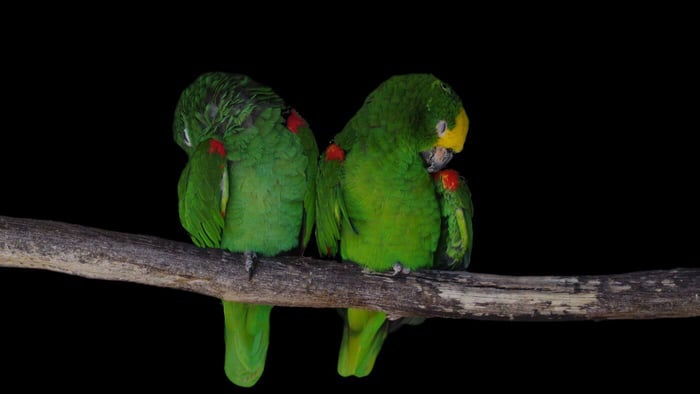
Sitting low on the perch
If the tail bobs, eyes, squinting, watery or sleepy and or puffy. Your bird may be ill or stressed out. Should consult an avian veterinarian. Also, if your bird's feathers are fanned out over the feet. Your bird is keeping its feet warm and this is a sign of contentment.
Picking at its feet
Your bird is grooming its feet and picking off pieces of food, faecal matter or tiny flakes of dead skin.
Plucking
This could be a sign of a medical problem (internal disease, endocrine imbalance problems, parasites, bacterial, viral or fungal), improper diet (malnutrition), mutilation syndrome, external lesions
(skin tumours, feather cysts, cuts or bruises, faecal matting of feathers and broken blood feathers), stressful environment, toxins (nicotine on their feathers, etc.), boredom, sexual and/or reproductive problems. Should consult an avian veterinarian to rule out a medical problem. Then consult an avian behaviourist.
Check out the product we offer for stressed birds who feather pluck Casozen Natural Calming Solution.
Preening
This keeps your bird's feathers in tip-top condition. Most parrots will solicit you to preen them, or they will preen you. This is a gesture of affection and trust.
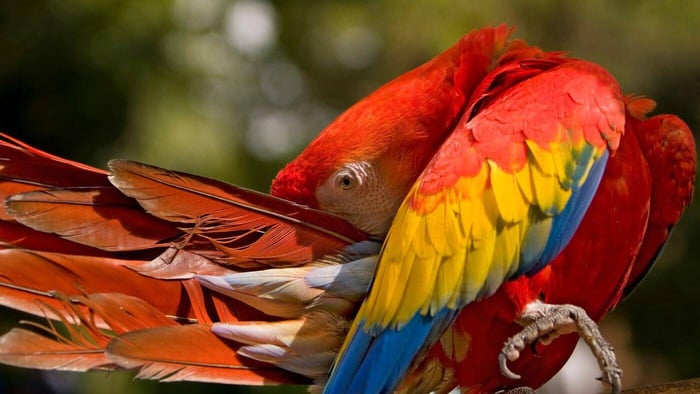
Regurgitating
This could be a sign of illness if your bird does this after eating or when your bird is by itself. Should consult an avian veterinarian. Also, if your bird does this in your presence. It is a sign of affection and love for you. Your bird has chosen you as its mate. This is an honour. Your bird might also do this parrot behaviour to its favourite object or toy.
Running back and forth inside its cage
This means that your bird is ready to come out, and your bird wants you to come and open the door to let him out.
Scratching
This could be a sign that your bird has very dry, flaky skin and feels itchy. Increase bathing activity. If bathing does not help. Consult an avian veterinarian. Maybe your bird has red mites. If your bird is a recent purchase or a new bird was recently added to the flock, may be your bird has red mites. Throw a white sheet over the cage in the evening, leaving it open enough for airflow. In the morning, if you see dark brownish-red little dots. You have mites. Consult an avian veterinarian.
Screaming
Screaming parrot behaviour encompasses a wide range of emotions and actions, which may include expressions of anger, signs of boredom, manifestations of fear, greeting a fellow flock member, moments of hunger-driven urgency, signals of discomfort or pain, episodes of jealousy, instances where they feel threatened, or simply moments when they seek attention from their human companions. Understanding and interpreting parrot behaviour is crucial for building a strong bond with these intelligent and social birds.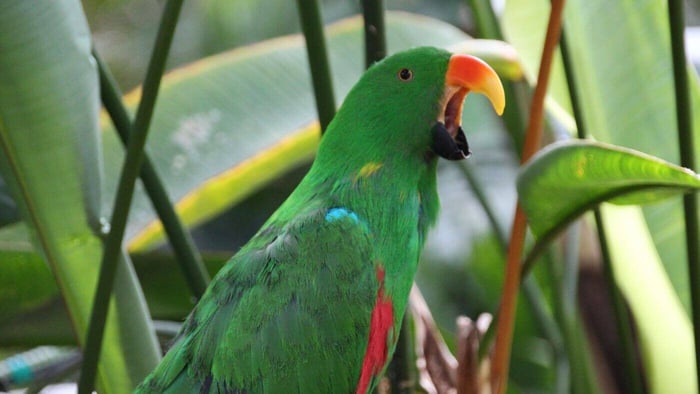
Shaking its head
Your cologne, freshly washed hair (shampoo), hair spray and fumes will irritate the nostrils. There may be an ear infection. Restrain your bird properly in a towel, lightly blow the ear covers aside and look in the ear canal. Look for abnormal redness, discharge or protrusions. Smell the ear. If it has a strong, unpleasant odour, like popcorn or rotting cheese, you have an infection. Take your bird to an avian veterinarian. In African Greys, this can mean a calcium deficiency in their diet. Your bird could be responding to a sound that it hears. Also could be a behavioural problem or a mental problem. Your avian veterinarian might prescribe a mood-altering drug.
Sneezing
Your bird may be allergic to some sort of dust or irritant in the air. It may have some water, dust or a feather up its nacres. If your bird has a nasal discharge and its nares are wet, you need to see an avian veterinarian.
Stress
This parrot behaviour can show itself in different forms such as rapid breathing, diarrhoea, trembling, holding feathers tight against the body, feather picking, loss of appetite, wing and tail fanning, screaming and standing tall on its perch and becoming really skinny.
Stretching
Your bird will take a wing and leg on one side of its body and stretch them out to the side, or your bird will take both of its wings and raise them into the air. Your bird is relaxing and getting the kinks out of its muscles.
Tail bobbing
Could be signs of illness, especially if there are other signs like puffiness or sitting low on the perch with heavy breathing. Should consult an avian veterinarian.
Tail wagging
Your bird is straightening out its tail feathers during a grooming session. It also could be a sign of happiness at the sight of its owner.
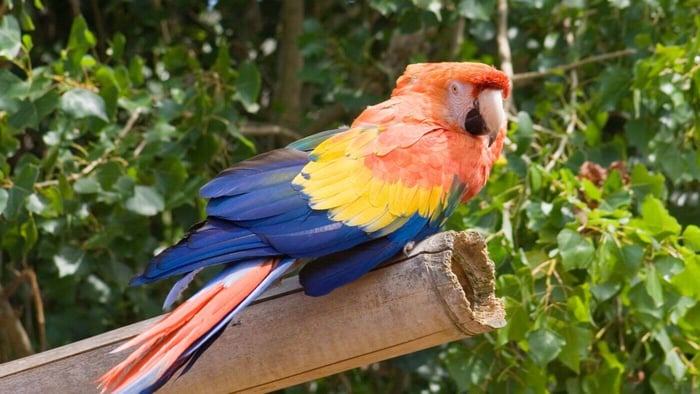
Trembling
This could be a sign of anticipation, excitement, insecurity or nervousness.
Vent rubbing
This tends to happen during the onslaught of spring. Male or female birds will do this as their hormones start to rage. Females will rub up against their favourite toys, humans and flat surfaces. Males will rub themselves on perches, favourite toys and humans. This is a natural urge for them. It feels good for the bird but it does not mean that you need to go out and buy a new companion bird for your pet. It does not mean that your bird needs a mate or to sell your bird to a breeder to make it happy. Just ignore the incident, and it will eventually work itself out of your bird's system as the mating season comes to an end. Occasionally, this becomes a behavioural problem. Sometimes it can stem from a medical problem as well. Like for instance, a tumour on the brain. If this is the case, consult an avian veterinarian and then an avian behaviour consultant.
Vocalisation
When you leave the room, your bird is wanting to know where you are going. Answer your bird back when you arrive home or back into the room. Your bird is greeting you. Greet your bird back. This is what they do in nature, in the flock. Sometimes, in the morning or evening, your bird will vocalize. This is normal as your bird is greeting the day or settling down for the night.
Walking along the branch with head up
Your bird is showing his delight in being in close proximity to you.
Walking along the branch with head down
This is a sign of your bird being vexed, irritated, agitated and or displeased. Leave your bird alone when in this mood.
Wanting attention
Your bird will softly vocalize to you, start shaking its toys, bouncing up and down or running back and forth in its cage.
Wing flapping
Your bird is exercising.
Wing flicking
Your bird does this when a feather is out of place and trying to realign it. It could also mean annoyance or displeasure.
It won't come out of its cage
Your bird may be scared of what you are wearing. Or something new in its area. Your bird is in a mood or may be tired and needs its privacy. May not be feeling well.
Yawning
Your bird may simply be tired or stretching its muscles. Occasionally, it may mean your bird needs more oxygen in its environment. The room that it is housed in might be stuffy. Let in a little fresh air (make sure that all door and window screens are secure).
If you have parrot behaviour questions or are having behavioural problems with your parrot, please consult an avian parrot behavioural consultant and or acquire the parrot behaviour books listed below.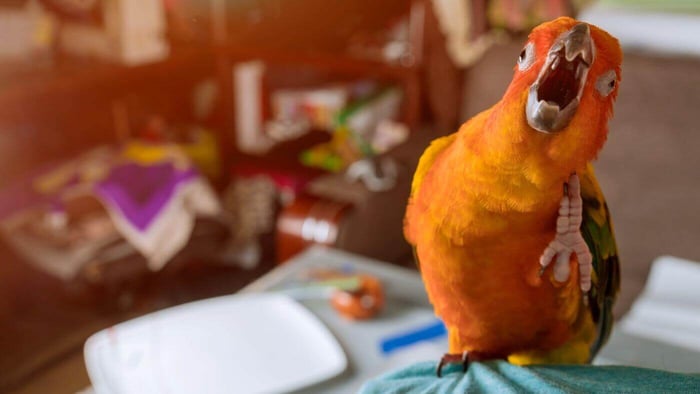
AVIAN PARROT BEHAVIORAL CONSULTANTS
Barbara Heidenreich – http://www.goodbirdinc.com/
Dr. Larry Lachman – http://www.drlarrylachman.com/
Greg Glendell – http://www.greg-parrots.co.uk/
Jessie James – http://www.birdwhisperer.com/
Joanne Olivia-Purdy – http://joliva-purdy.tripod.com/
Pamela Clark – http://www.pamelaclarkonline.com/
Phoebe Green Linden – http://www.santabarbarabirdfarm.com/
Sally Blanchard – https://companionparrotonline.com/
Shari Beaudoin – http://www.parrotislandinc.com/

